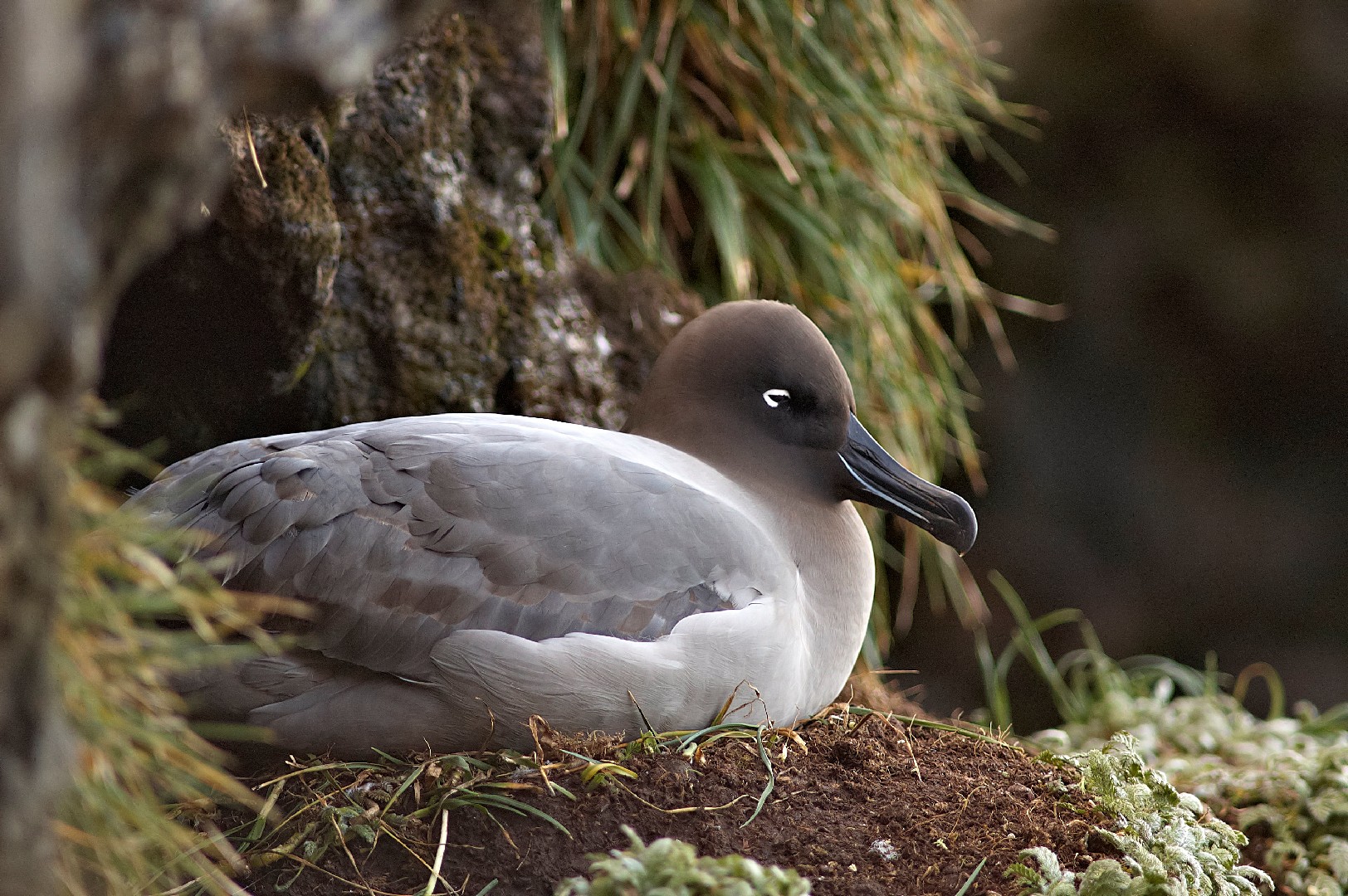Light-mantled Albatross
A species of Sooty albatrosses Scientific name : Phoebetria palpebrata Genus : Sooty albatrosses
Light-mantled Albatross, A species of Sooty albatrosses
Botanical name: Phoebetria palpebrata
Genus: Sooty albatrosses
Content
Description General Info
 Photo By User:Fguerraz , used under CC-BY-SA-4.0 /Cropped and compressed from original
Photo By User:Fguerraz , used under CC-BY-SA-4.0 /Cropped and compressed from original Description
The light-mantled albatross is largely sooty-brown or blackish, darker on the head, with paler upperparts from the nape to the upper tail-coverts which are grey to light grey, the palest on the mantle and back. The plumage has been described as being similar in appearance to the colouring of a Siamese cat. The eyes are partly encircled with thin post-orbital crescents of very short grey feathers. The bill is black with a blue sulcus and a greyish-yellow line along the lower mandible, and is about 105 mm (4.1 in). Measurements show that males and females are similar in size, with average length of 79 to 89 cm (31–35 in), wing-span of 183 to 218 cm (72–86 in), and weight of 2.5 to 3.7 kg (5.5–8.2 lb). 
Size
93 cm
Life Expectancy
40 years
Nest Placement
Ground
Feeding Habits
Light-mantled Albatross primarily consume squid and krill, supplemented by crustaceans, fish, and carrion. They forage on or near the surface, sometimes with whales or dolphins, and can dive up to 12 m for food.
Habitat
The light-mantled Albatross is predominantly found in marine pelagic zones of the Southern Ocean, ranging from Antarctic pack-ice regions to temperate waters, sometimes as far north as along the Humboldt Current. Its circumpolar distribution covers a broad span of latitudes from close to Antarctica to roughly 35°S. During breeding, light-mantled Albatross prefer remote subantarctic islands, where they establish nesting sites on steep slopes, inland cliff ledges, or within vegetation such as tussock grasses and ferns. Outside the breeding season, they maintain an entirely marine existence, foraging across vast oceanic expanses.
Dite type
Piscivorous
General Info
Feeding Habits
Bird food type
Behavior
They have a loud shrill voice that is trumpet-like, and when threatened will snap their bills or utilize a throaty "gaaaa". When courting, they will utilize aerial displays and formation flying. They will also use mutual calling with deviations in tone brought occurring by head positioning, and finally, they use their tail in displays more than other albatrosses. 
Distribution Area
The light-mantled albatross has a circumpolar pelagic distribution in the Southern Ocean. It ranges in latitude from the pack-ice around Antarctica, with the southernmost record from 78°S in the Ross Sea, to about 35°S, with occasional sightings further north along the Humboldt Current. It breeds on several subantarctic islands including the Prince Edward Island, Marion Island, Crozet Islands, Amsterdam Island, St. Paul Island, Kerguelen Islands, Heard Island, Macquarie Island, Campbell Island, Auckland Islands, Antipodes Islands and South Georgia and at least on one island in the maritime Antarctic at 62°S on King George Island. Except when breeding, its habitat is entirely marine, and it will forage from the edges of the Antarctic pack-ice to about 40°S. When foraging during the breeding season, the birds will remain closer to their nest sites. 
Species Status
The light-mantled albatross population is estimated at about 58,000, from a 1998 estimate, and is declining. Threats and population status are poorly quantified and the species is classified as near threatened, with an occurrence range of 44,300,000 km (17,100,000 sq mi). Potential predators on some breeding islands are giant petrels, feral cats and rodents. At sea they are threatened by bycatch in the longline fishery and through starvation by eating plastic marine debris. 
Scientific Classification
Phylum
Chordates Class
Birds Order
Albatrosses and Petrels Family
Albatrosses Genus
Sooty albatrosses Species
Light-mantled Albatross